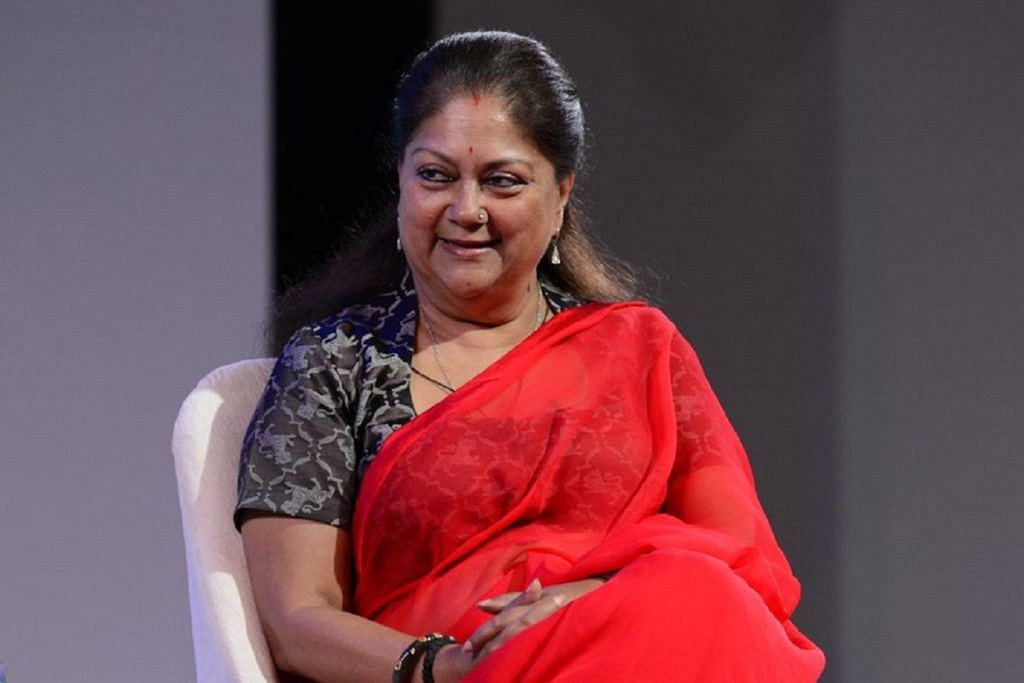Rajasthan government’s MJSA scheme is reviving water bodies and increasing groundwater levels, and Vasundhara Raje wants to make it her main poll plank.
New Delhi: The BJP is hoping that the Vasundhara Raje government in Rajasthan will be able to retain power in the crucial 2018 assembly polls riding on what it says is the success of a flagship scheme which promotes the revival of water bodies in villages and finds new solutions to increase the groundwater level.
Raje knows the significance of water in the parched state, and according to sources, blames years of “neglect” for the drying up of wells and other sources of water. Come election season, the CM will bank heavily on the projects under the Mukhyamantri Jal Swavalamban Abhiyaan (MJSA) to seek votes.
“This is likely to be the main poll plank, and Raje will demand another term from voters, especially in villages, on work done under this project,” BJP sources told ThePrint.
Facts and figures
Planning for the MJSA began in 2015, with the first phase being launched in 2016. The first phase covered approximately 3,500 villages at a cost of Rs 1,400 crore.
The second phase, covering about 4,200 villages, was launched earlier this year, and is expected to cost Rs 1,500 crore. The total number of jobs undertaken in the first two phases is over 2.23 lakh. This includes activities related to peripheral bandhs, diversion channels, feeders, bank stabilisation and afforestation which have taken place under the ambitious scheme.
According to government figures, 4,693 farm ponds have been revived in rural areas, while 349 jal hoj (water storage tanks) and diggies(intermediate storage systems) have been built. Apart from these, 2,612 ‘talabs’ (ponds) have been renovated, while 9,269 mini percolation tanks, 4,397 staggered trenches, and 1,531 water harvesting structures have been constructed.
The third phase, covering about 7,000 villages, is expected to begin in December 2017 or in early 2018. Overall, the MJSA is to cover 33 districts across Rajasthan.
Has the scheme succeeded?
The importance of the project for Raje and her party can be gauged from the fact that to implement this project, an authority was formed and nine departments were brought together to speed up work.
Shriram Vedire, chairman of the River Basin Authority, and an advisor to the Union Ministry of Water Resources, said: “It was a major challenge to get the nine departments to work together on this scheme. But we overcame the challenge.”
Vedire said the project had been successful in increasing green cover, cropping area, and reducing the dependency on water tankers. “The only challenge we have is in desert areas, where we are providing farmers with tankers to store rain water,” he added.
Rakesh Reddy, head of a team that has been hired from the Telangana government to implement the project, said: “Earlier, there was no water till (a depth of) 40 feet. Now, if you dig four feet, you will get water.
However, Rajasthan Congress president Sachin Pilot questioned thesuccess of the scheme.
“The first problem with the scheme is that no one knows how much money is pouring in to the scheme. District officials at some places are forcing villagers to contribute, and apart from this, NGOs and corporates (through CSR) too are paying. There is no audit, so there is no transparency,” he told ThePrint.
“Second, I believe the check dams are being built without using scientific techniques. We had a situation in Jalore where the overflow from one check dam led to overflow in another.”
Socio-economic impact
Sources said the government was now documenting the socio-economic impact of project and the consequent rise in the groundwater table, and if it was leading to a rise in the standard of living. The BJP believes it can defeat anti-incumbency, especially in rural areas, thanks to this project.
“Strategically speaking, the BJP can analyse the demography of every village covered under the project, as detailed profiling has been done. The profiles include details like number of villages, the SC/ST population, number of BPL families, total population, and animals,” said a source.
